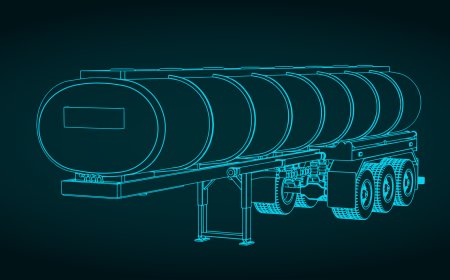Archimedes’ Principle Explained: Why Objects Float or Sink
Understand buoyancy through Archimedes’ principle. Learn how fluids exert an upward force on submerged objects, why some objects float while others sink, and explore applications from ships and balloons to submarines and hydrometers.

Archimedes’ Principle and Buoyancy: Why Objects Float or Sink
When the ancient Greek mathematician Archimedes jumped out of his bath shouting “Eureka!” he was reportedly solving a practical problem. The king had given him the task of determining whether a golden crown had been adulterated with cheaper metals without damaging the crown. By noticing that the volume of water displaced when he lowered the crown into the bath was proportional to its volume, Archimedes realized that an object immersed in a fluid experiences an upward force equal to the weight of the fluid it displaces. This insight—now known as Archimedes’ principle—forms the foundation of buoyancy and explains why some things float while others sink.
The Origin of Buoyant Force
Fluids exert pressure in all directions, and pressure increases with depth because the weight of the fluid above presses down. The bottom of a submerged object is deeper than its top, so it feels a greater pressure pushing upward. When you integrate these pressure differences over the object’s surface, the net result is an upward force. Archimedes quantified this force: the buoyant force on a submerged object equals the weight of the fluid displaced. In formula form, buoyant force equals the fluid’s density multiplied by gravitational acceleration and the volume of fluid displaced.
Floating and Sinking: Density Matters
Whether an object floats or sinks depends on the relationship between its weight and the buoyant force. If the object’s weight is less than the weight of the fluid displaced, the object floats; if it is greater, the object sinks. This criterion can be recast in terms of density. Density is mass per unit volume. An object floats if its average density is less than the density of the surrounding fluid. A solid block of pine wood has a density around 500 kilograms per cubic metre, much less than water’s density of about 1,000 kilograms per cubic metre, so a wooden log floats. A solid steel block has a density around 7,800 kilograms per cubic metre and sinks immediately.
However, density alone doesn’t tell the whole story—shape matters because it determines how much water is displaced. A massive steel ship floats because it encloses a large volume of air, reducing its average density below that of water. When a ship is loaded with cargo, it sits lower in the water and displaces more water, increasing the buoyant force to match the new weight. The load line painted on a ship’s hull indicates the maximum safe draft in different water densities.
Everyday Examples of Buoyancy
Buoyancy is not restricted to water. Hot-air balloons rise in the atmosphere because heated air is less dense than the cooler air surrounding it. A helium balloon rises because helium has a lower molecular weight than the nitrogen–oxygen mixture in the atmosphere. Fish control their depth by adjusting the volume of gas in their swim bladders, thereby changing their average density. Submarines use ballast tanks to take in or expel water, altering their density to dive or surface. Scuba divers control buoyancy with buoyancy compensator vests filled with air.
Buoyancy also explains why you feel lighter in a swimming pool. A human body is only slightly denser than water, and lungs act as flotation devices. Salty water, such as the Dead Sea, is denser than fresh water, so it exerts a larger buoyant force. People who cannot float in a pool often find they can easily float in the ocean. Hydrometers, instruments used to measure fluid density, float higher in denser fluids.
Measuring Density and Displacement
Archimedes’ principle provides a simple method for measuring the density of irregular objects. By weighing an object in air and then weighing it while submerged in water, you can calculate the buoyant force and thus the volume of water displaced. Dividing the object’s mass by the displaced volume yields its density. This technique is still used in laboratories today.
Applications and Implications
Understanding buoyancy is critical in engineering. Naval architects design hull shapes to ensure stability and ensure that ships recover from tilting forces. Oil rigs, floating bridges and rescue rafts are engineered with buoyancy and metacentric stability in mind. Salvage companies raise sunken ships by attaching balloons or barrels filled with air to increase the upward force.
Archimedes’ principle also has environmental implications. Melting sea ice doesn’t raise sea level because floating ice already displaces its weight in water. In contrast, melting glaciers resting on land add water to the ocean and contribute to sea-level rise. Scientists analyzing iceberg densities use buoyancy to estimate the proportion of an iceberg hidden underwater—about nine-tenths.
Clearing Up Misconceptions
A common misconception is that heavy objects sink and light objects float. In reality, it is the ratio of mass to volume—density—that matters. A heavy steel ship floats while a tiny pebble sinks because of their relative densities and the volume of water they displace. Another misconception is that buoyancy only acts in liquids. Air is a fluid, and buoyant forces act in gases as well. The principle is also indifferent to the shape of an object; shape only matters because it determines the volume of displaced fluid.
Archimedes’ principle elegantly links pressure differences in a fluid to the upward force experienced by submerged objects. By comparing weight and density to the mass of fluid displaced, we can predict whether objects will float or sink and understand the stability of vessels and balloons. From bath tubs to ocean-going ships, hot-air balloons and the design of hydrometers, the concept of buoyancy influences many aspects of daily life and technology. More than two millennia after Archimedes’ discovery, his eureka moment still helps us navigate the world—literally and metaphorically.
What's Your Reaction?












































































































